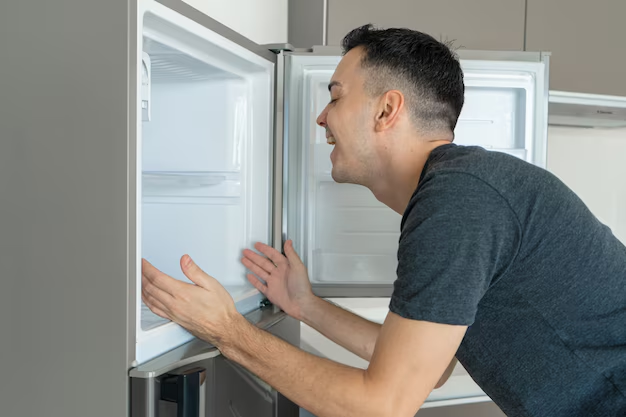Properly Charging Your Refrigerator with R134a: A Complete Guide
Ensuring your refrigerator is functioning at full efficiency can sometimes mean taking on tasks that might seem daunting at first—like recharging the refrigerant. If you've noticed performance issues with your appliance, it might be time to look into the process of charging your refrigerator with R134a. This guide will help you navigate through every step of the process, providing you with the confidence and know-how to tackle this essential maintenance task.
🤔 Why R134a? Understanding the Refrigerant
R134a, also known as tetrafluoroethane, is a hydrofluorocarbon (HFC) used widely as a refrigerant in domestic and automotive applications. It replaced older refrigerants such as R12 due to its lower environmental impact, making it more eco-friendly and a preferred choice for many manufacturers.
Key Features of R134a
- Environmental Impact: R134a has zero ozone depletion potential, aligning with greater environmental protection regulations.
- Efficiency: Provides effective thermal transfer, maintaining the cooling performance of your refrigerator.
- Safety: Less flammable than some other refrigerant options available on the market.
🚨 Signs Your Refrigerator Might Need a Recharge
Refrigerators are integral to daily life, and identifying when they require attention can save time and money. Here are some signs that might indicate your refrigerator is low on refrigerant:
- Inefficiency: Foods are not staying cool, drinks are taking longer to chill, or ice isn't freezing properly.
- Motor Running Constantly: When your refrigerator's compressor is running all the time, it could mean it’s working harder to maintain temperature.
- Unusual Noises: Popping or hissing sounds might be symptomatic of low refrigerant levels.
🛠️ Preparing to Charge Your Refrigerator
Before diving into the charging process, preparation is key to ensure tasks are completed safely and efficiently.
Tools and Materials You'll Need
- R134a Refrigerant Canister: Readily available at hardware or automotive stores.
- Refrigerant Charging Hose: Designed to connect the canister to the refrigerator.
- Gauges: To measure the current pressure inside your refrigerator's compressor.
- Protective Gloves and Goggles: Safety first to avoid direct contact with refrigerant.
Important Preparatory Steps
- Unplug the Refrigerator: Always ensure safety by disconnecting power.
- Locate the Service Port: This is typically found on the back of the refrigerator. Refer to your manufacturer's guide to find the correct location.
- Ensure Proper Ventilation: Work in a well-ventilated area to safely disperse any released refrigerant.
📈 The Step-by-Step Charging Process
Step 1: Attach the Charging Hose
- Connect one end of the charging hose to the R134a canister and the other to the service port on the refrigerator.
- Ensure connections are tight to avoid leaks.
Step 2: Measure the Current Pressure
- Use gauges to check the current refrigerant pressure.
- Ideal Pressure Levels: This can vary, but generally, aim for a pressure level specified by the fridge manufacturer for optimal performance.
Step 3: Recharging with R134a
- Gradually open the valve on the R134a canister.
- Allow refrigerant to move from the canister into the refrigerator compressor.
- Monitor the gauges: Adjust the flow as needed and periodically check if optimal pressure is reached.
Step 4: Seal and Check
- Once ideal pressure is achieved, seal the canister, remove the hose, and secure the service port.
- Power on the refrigerator and monitor performance over the next few hours.
💡 Practical Tips for Successful Recharging
- Avoid Overcharging: More refrigerant does not mean better performance; overcharging can damage the system.
- Consistency in Monitoring: Regularly check for signs of performance issues to address them promptly.
- Professional Help: If uncertain, don’t hesitate to seek professional assistance to avoid mishandling or damage.
🛡️ Safety Considerations and Best Practices
Refrigerant handling requires meticulous care and attention to ensure personal safety and appliance integrity.
- Follow Manufacturer's Guidelines: Every refrigerator model may have specific instructions and limits.
- Handle with Care: Ensure refrigerant and appliances are handled according to safety regulations to prevent accidents.
- Proper Disposal: Dispose of used canisters and other materials according to local regulations to prevent environmental harm.
📋 Quick Summary of Key Steps
Here's a quick, visually distinct summary to reinforce the charging process:
⚙️ Preparation
- Secure tools: R134a, gauges, charging hose.
- Unplug refrigerator.
- Ensure proper ventilation.
🔄 Charging Process
- Attach hose: Canister to service port.
- Measure pressure.
- Gradually charge and monitor.
- Seal and check performance.
🛡️ Safety Tips
- Regular checks to prevent overcharging.
- Follow specific model guidelines.
- Prioritize safety with PPE.
Concluding Thoughts on Maintaining Refrigerator Efficiency
Ensuring your refrigerator remains efficient means understanding when and how to recharge it with R134a. Though it requires some technical knowledge, following this guide can make the process straightforward and manageable. With proper maintenance, your refrigerator will continue to serve its vital role in preserving your food, giving you peace of mind and saving energy. Remember, when in doubt, professional technicians are always available to help, ensuring safety and proper handling.
